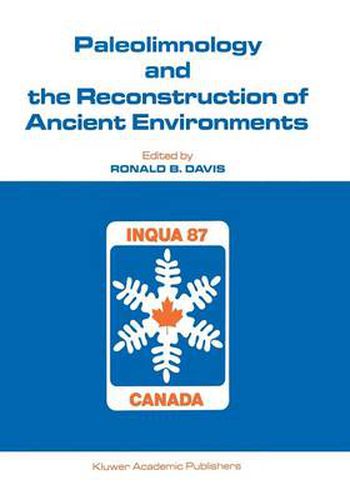Readings Newsletter
Become a Readings Member to make your shopping experience even easier.
Sign in or sign up for free!
You’re not far away from qualifying for FREE standard shipping within Australia
You’ve qualified for FREE standard shipping within Australia
The cart is loading…






This title is printed to order. This book may have been self-published. If so, we cannot guarantee the quality of the content. In the main most books will have gone through the editing process however some may not. We therefore suggest that you be aware of this before ordering this book. If in doubt check either the author or publisher’s details as we are unable to accept any returns unless they are faulty. Please contact us if you have any questions.
stable or falling water levels, and permit differen tiation between gradual and sudden transgression The level of Lake Ontario was long assumed to of the shoreline. Vegetational succession reflects have risen at an exponentially decreasing rate shoreline transgression and increasing water solely in response to differential isostatic rebound depth as upland species are replaced by emergent of the St. Lawrence outlet since the Admiralty aquatic marsh species. If transgression continues, Phase (or Early Lake Ontario) 11 500 years B. P. these are in turn replaced by floating and sub (Muller & Prest, 1985). Recent work indicates merged aquatic species, commonly found in water that the Holocene water level history of Lake to 4 m depth in Ontario lakes, below which there Ontario is more complex than the simple rebound is a sharp decline in species richness and biomass model suggests. Sutton et al. (1972) and (Crowder et al. , 1977). This depth varies with Anderson & Lewis (1982, 1985) indicate that physical limnological conditions in each basin. periods of accelerated water level rise followed by Because aquatic pollen and plant macrofossils are temporary stabilization occurred around 5000 to locally deposited, an abundance of emergent 4000 B. P. The accelerated water level rise, called aquatic fossils reflects sedimentation in the littoral the ‘Nipissing Flood’, was attributed to the cap zone, the part of the basin shallow enough to ture of Upper Great Lakes drainage. support rooted vegetation.
$9.00 standard shipping within Australia
FREE standard shipping within Australia for orders over $100.00
Express & International shipping calculated at checkout
This title is printed to order. This book may have been self-published. If so, we cannot guarantee the quality of the content. In the main most books will have gone through the editing process however some may not. We therefore suggest that you be aware of this before ordering this book. If in doubt check either the author or publisher’s details as we are unable to accept any returns unless they are faulty. Please contact us if you have any questions.
stable or falling water levels, and permit differen tiation between gradual and sudden transgression The level of Lake Ontario was long assumed to of the shoreline. Vegetational succession reflects have risen at an exponentially decreasing rate shoreline transgression and increasing water solely in response to differential isostatic rebound depth as upland species are replaced by emergent of the St. Lawrence outlet since the Admiralty aquatic marsh species. If transgression continues, Phase (or Early Lake Ontario) 11 500 years B. P. these are in turn replaced by floating and sub (Muller & Prest, 1985). Recent work indicates merged aquatic species, commonly found in water that the Holocene water level history of Lake to 4 m depth in Ontario lakes, below which there Ontario is more complex than the simple rebound is a sharp decline in species richness and biomass model suggests. Sutton et al. (1972) and (Crowder et al. , 1977). This depth varies with Anderson & Lewis (1982, 1985) indicate that physical limnological conditions in each basin. periods of accelerated water level rise followed by Because aquatic pollen and plant macrofossils are temporary stabilization occurred around 5000 to locally deposited, an abundance of emergent 4000 B. P. The accelerated water level rise, called aquatic fossils reflects sedimentation in the littoral the ‘Nipissing Flood’, was attributed to the cap zone, the part of the basin shallow enough to ture of Upper Great Lakes drainage. support rooted vegetation.